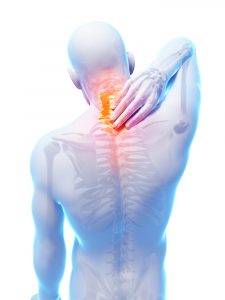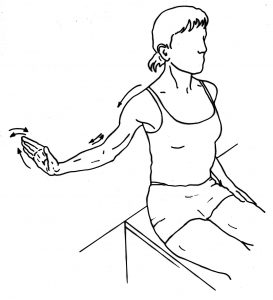Understanding Persistent Pain & What You Can Do To Recover
 The first thing to understand about persistent pain is that the amount of pain you experience does not necessarily relate to tissue damage. There are people who have severe joint degeneration on x-ray and don’t have pain, and others that have clear x-rays and lots of pain. Pain is a normal response to your brain perceiving something as a threat, this is the body’s way of protecting itself, and in the short term it works well.
The first thing to understand about persistent pain is that the amount of pain you experience does not necessarily relate to tissue damage. There are people who have severe joint degeneration on x-ray and don’t have pain, and others that have clear x-rays and lots of pain. Pain is a normal response to your brain perceiving something as a threat, this is the body’s way of protecting itself, and in the short term it works well.
The body initially responds to an injury with inflammation, which promotes healing. When pain persists despite tissue healing, it is because the nervous system – nerves, spinal cord and brain have become sensitised.
It works like this: there are nociceptors, lets call them ‘danger sensors’ all over the body. With enough stimulation, they send signals up to the spinal cord. When stimulation reaches a critical level, the message is sent on to the brain. The role of the brain is to assess these messages, and if the brain concludes that you are in danger and need to take action, it will produce the experience of pain. So while the pain is very much real, it is an output of the brain, not just a sensation in the body tissues.
With persistent pain, your nervous system changes. You develop more of some types of danger sensors in the nerves and spinal cord, and their alarm threshold is lowered. It is kind of like a car alarm that goes off when a leaf blows over it; the nervous system is in a state of hyper-vigilance, always on the lookout for threat. The brain becomes really good at producing the experience of pain, through repeated experience. So over time, it takes less and less to trigger your pain, even thinking about bending or lifting can be enough to feel pain. This sets you up in a downward spiral, the less activity you do to avoid pain, the more deconditioned and hypersensitive your tissues get, and the more pain you have.
There is a strong link between feeling depressed, stressed or angry and persistent pain. Stress affects your physiology and further sensitises the nervous system. Your attitudes and beliefs make a huge contribution to your experience of pain. We consistently see that people with overly negative or unhelpful thoughts have much more difficulty recovering from their injuries. However, learning positive ways of coping, such as pacing yourself effectively can significantly reduce your disability. Upgrading your activity in a slow and steady manner can begin to desensitise the nervous system, and hence reduce or even eliminate your experience of pain.
One of the ways we facilitate this here at Physio Posture Fitness, is through Physiotherapy Gym Sessions (PGS), allowing a supervised, graded return to activity in a focused individualised manner. Whilst the exercises precisely target weak or tight muscles, they are also designed to reduce the sensitivity of your nervous system to allow you to get back to doing what you love to do.
Tips for tackling persistent pain:
Your brain is amazing, capable of rewiring itself to recover from persistent pain. Try these ‘brain’ exercises to change neural connections in your brain straight away.
- Virtual Reality: Close your eyes and imagine yourself doing an activity that you love pain free: running, wrestling with the kids, gardening. Play the positive video in your head over and over.
- Remember to keep exercise fun – laughter really is the best medicine! Put on your favourite music & let yourself dance. Move without fear.
Now try these stretches:
1) Neural Glides are an effective way of mobilising the nervous system and encouraging freedom of movement. They are a way of desensitising neural pathways throughout the day. A mobile nervous system is a healthy nervous system.
Stop sign: put your hand out in front of you as if directing traffic to a stop, only straighten your elbow to a comfortable range. Try this progressively further out to the side until you can do it comfortably side on to your trunk.
2) Try approaching a movement in a novel way to get under the radar of a sensitised nervous system:
- Instead of turning your head, keep it still and swivel your trunk around in an office chair.
- Try moving your eyes side to side whilst sitting tall and holding the head still to wake up your postural muscles and give your eyes a break from the screen
By: Alla Melman, Physiotherapist
Exercises extract from New Bodyworks book by Francine St.George.

